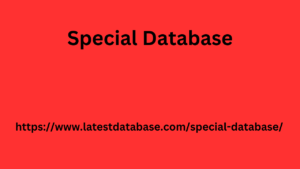Why is Email Verification Important?
- Preventing Email Bounces: Invalid email addresses can lead to bounce rates, which can harm your sender reputation and deliverability.
- Maintaining a Clean Email List: Regular verification helps remove inactive or invalid addresses, keeping your list up-to-date.
- Improving Email Marketing Effectiveness: Accurate email addresses ensure your messages reach the intended recipients, increasing engagement and conversion rates.
2. Basic Email Validation Techniques
Regular Expressions:
One of the most common methods for email validation is using regular expressions. While they offer flexibility, it’s important to use a robust pattern that covers various email formats. Here’s a basic example:
Limitations of Regular Expressions:
- Complexity: Regular expressions can become complex for handling all possible email formats.
- False Positives: Some valid email addresses might not match the pattern, leading to false negatives.
- False Negatives: Invalid email addresses might mistakenly pass the validation.
Email Address Syntax:
While regular expressions can be helpful, understanding the basic syntax of email addresses is also essential. A typical email address consists of a local part (before the @ sign) and a domain part (after the @ sign). The local part can include letters, numbers, hyphens, and periods, while the domain part usually consists of multiple labels separated by periods.
Additional Considerations:
- MX Record Verification: To ensure an email address is associated with a valid domain, consider checking the MX (Mail Exchanger) records. This involves querying DNS servers to verify if the domain has configured mail servers.
- Email Address Existence Verification: While not always feasible, you can attempt to verify the existence of an email address by sending a verification email and checking for a response. However, this can be time-consuming and might not guarantee accuracy.
3. Advanced Email Verification Techniques
Third-Party Email Verification Services:
Leveraging third-party email verification services can streamline the process and provide more accurate results. These services often use advanced algorithms and databases to validate email addresses. Some popular options include:
- Mailgun: Offers comprehensive email verification Special Database and delivery services.
- Amazon SES: Provides email sending and verification capabilities.
- SendGrid: Offers various email marketing and delivery features, including email verification.
Custom Verification Logic:
For more complex scenarios, you might need to Updated 2024 Mobile Phone Number Material implement custom verification logic. This could involve:
- API Integration: Integrating with third-party APIs that offer email verification services.
- Database Lookup: Checking against a database of known valid and invalid email addresses.
- Real-time Verification: Verifying email addresses in real-time as they are entered.
Best Practices for Email Verification:
- Regular Verification: Conduct regular email address verification to maintain a clean list.
- User Consent: Obtain explicit user consent before collecting and verifying email addresses.
- Data Privacy: Handle email addresses responsibly and comply with data privacy regulations.
- Error Handling: Implement proper error handling to provide informative feedback to users.
- Testing: Thoroughly test your email verification methods to ensure accuracy and reliability.
By following these guidelines and leveraging the appropriate techniques, you can effectively verify email addresses in your C# applications, improving the quality of your email lists and enhancing the overall effectiveness of your

